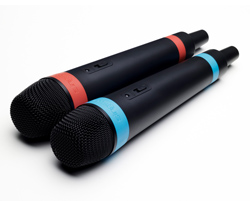One of the topics that I’ve seen poorly understood, and even deliberately used to mislead people, is the issue of wireless microphone transmitter power and the effects said power has on system performance.
Let’s start with the basics: all things being equal, more transmitter power = more range for the system, but not in a linear way.
In broad terms, when discussing analog wireless systems, the receiver wants to see a signal from a transmitter (carrier) that is at least about 4-6 dB greater than the noise floor before it can make use of that signal – this is known as the receiver CNR or Carrier to Noise Ratio. The better the receiver front end, the lower this number can be.
And we all remember the inverse square law, right? In other words, every time you double the distance between transmitter and receiver (in free space), you cut the amount of RF power received by four times. Thus distance is a greater factor in losing your signal than the level of power from the transmitter.
Another way to look at it is that you need to quadruple the RF power in order to have the same reception at only double the distance. This is why in the real world, twice the power at the transmitter yields only about a 20 percent increase in range.
But the other problem is that things are never equal. There are many other factors affecting the potential range of the system, from the type of surfaces nearby (or lack thereof), weather conditions, how many people are around, and of course; potential interference from other sources. Antenna system design and positioning can also significantly affect range.
In other words, transmitter power is one factor, and relatively speaking, can be a minor one. This is not to say that more power doesn’t help, because it very well may. Background noise is nearly always present, and has lately been on the increase due to DTV and other sources such as digital data services, so greater transmitter power can help to “cut through” and provide a solid signal with no dropouts.
In some cases, however, it can also be advantageous to use the lowest power you can manage with your wireless transmitters. For one thing, there is less battery draw, which may be an important factor depending upon the type of application.















